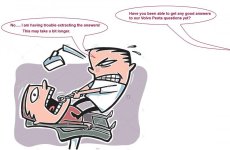Rick I've done this enough times to know not to use bolts to seat transom
I have no idea as to what you mean "seat transom"!
The "transom" is a structural component of the boat's stern section.
The housing that connects to the transom is a Transom Shield.
The Volvo Penta stern drive connects to the Transom Shield via a gimbal bell.
Rick the boat is not here and can't give you advance on each Cylendar
Even while the ignition system is EST, and most mechanics will set BASE only....... I would still want to see what it is doing throughout the RPM range...... or what we refer to as the "Progressive" advance up to the "Full-In" RPM.
Curious why we keep going back to the build
Then let's put that to bed by answering my questions:
1.... how were the hydraulic cam followers adjusted?
I.E., what procedure was used.... static 2 or 3 stop, or the more accurate 8 stop?
2..... where is the spark lead at 3,500 RPM and/or above?
I.E., how much ignition advance is each cylinder seeing at 3,500 RPM up to the Full-In?
3..... would you consider using a crankshaft mounted degree wheel (along with the camshaft specs) and verifying the phasing up the camshaft?
I.E., verify that the #1 intake valve cam follower begins to lift at XXX* crankshaft angle...... and that it closes at XXX* crankshaft angle as intended by the camshaft manufacture.
Also..... which piston profile was used? Was a Quench Effect built into the combustion chamber? If so, what is the quench dimension?
I pushed it hard for 10 hours straight if there was any failure it would have been noticed cam is ever so slightly over stock
Please post the camshaft specs, and include the degree specs per crankshaft angle!
I've been building engines for at least 10+years industrial, automotive, marine, agricultural
I've been involved with the SBC since the mid 60's..... both in HP Auto and later in the Marine versions.
I am no stranger to this engine.
And by the way, I have NEVER built a SBC using that stupid silly GM Full Dished piston. It is totally incorrect for Marine use!
The SBC cylinder head incorporates a wedge style combustion chamber.
This SBC cylinder head has a rather substantial quench surface above the main chamber.
The Marine version SBC needs a quench style combustion chamber in order to eliminate the Detonation potential.
This cannot be achieved with the GM F/D piston!  Sadly, GM has continued to use their Full Dished piston in the 5.7s, the 6.2s and in the 6.3s. (5.7 = 350 cu in, 6.2 = 377 cu in and 6.3 = 383 cu in)
Sadly, GM has continued to use their Full Dished piston in the 5.7s, the 6.2s and in the 6.3s. (5.7 = 350 cu in, 6.2 = 377 cu in and 6.3 = 383 cu in)


